UPSC Daily Current Affairs - 3rd July 2024 | Current Affairs & Hindu Analysis: Daily, Weekly & Monthly PDF Download
GS3/Science and Technology
Advanced Medium Combat Aircraft prototype expected by 2028-29
Source: The Hindu

Why in news?
The Defence Ministry plans significant private sector involvement in the design and development of the indigenous fifth-generation fighter aircraft, the Advanced Medium Combat Aircraft (AMCA). The first prototype is expected by 2028-29, as per official sources.
Fifth-generation fighter aircraft (FGFA)
Fifth-generation fighter jets are designed for various missions like air-to-air combat and ground attack. They feature plain surfaces, specially shaped exhaust nozzles, and engines within the body to conceal heat signatures. These aircraft also incorporate special radars to detect their own radar emissions. Countries with fifth-generation stealth fighters include the US (F-22 Raptor, F-35A Lightning II), China (J-20 Mighty Dragon), and Russia (Sukhoi Su-57).
About Advanced Medium Combat Aircraft (AMCA)
The AMCA is India's indigenous fifth-generation multirole fighter jet, set to be larger than other Indian Air Force fighters. This project will position India among nations with their own fifth-generation aircraft.
Organisations involved
- The Aeronautical Development Agency (ADA) under DRDO will oversee program execution and aircraft design.
- Manufacture will be carried out by HAL, a state-owned enterprise.
Features
- Stealth: The 25-tonne aircraft will boast advanced stealth features for radar evasion.
- Fuel & Weapons: It will house a 6.5-tonne internal fuel tank and an internal weapons bay for various armaments, including indigenous weapons.
- Engine: The AMCA Mk1 will use the US-built GE414 engine, while the Mk2 variant will feature a more powerful 110kN engine developed in collaboration with a foreign defense major.
Significance of AMCA
- Indigenous Advancement: The AMCA marks India's development of a fifth-generation fighter, distinct from the 4.5-generation Light Combat Aircraft (LCA) Tejas.
- Stealth Features: Its low electromagnetic signature will enhance stealth capabilities, while its sensors and weaponry ensure effective enemy aircraft engagement.
- Enhanced Utilization: The AMCA aims for increased operational time and reduced maintenance periods, facilitated by an Integrated Vehicle Health Management system.
IAF Requirements
- The IAF, with declining squadron numbers, anticipates the need for seven AMCA squadrons to supplement its existing fleet.
Strategic Significance
- Given China's advancements in fifth-generation aircraft, India's AMCA project holds strategic importance. China's deployment of the J-20 FGFA near the Indian border underscores this significance.
Clearance from Cabinet Committee on Security (CCS)
- The CCS sanctioned the AMCA project in March 2024. It envisions a 25-tonne twin-engine stealth aircraft with advanced features, aiming for a prototype by 2028-29.
- The project will unfold in two phases, featuring the GE F414 engine in Mk1 and a more potent engine in Mk2, potentially developed in partnership with France.
GS3/Economy
PLI Scheme to Boost the Recycling of Critical Minerals in India
Source: Indian Express
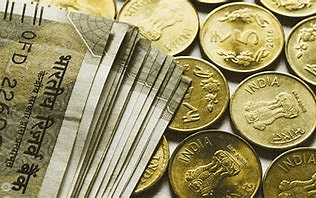
Why in News?
A Production Linked Incentive (PLI) scheme to encourage the recycling of critical minerals in India is being designed by the Ministry of Mines. It is intended to complement the Battery Waste Management Rules (BWMR) 2022 and is in line with NITI Aayog policy recommendations.
What are Critical Minerals?
- A mineral is considered critical when the risk of supply shortage and associated impact on the economy is relatively higher than other raw materials.
- These minerals are essential for economic development and national security.
- Their lack of availability or concentration of extraction/processing in a few geographical locations could lead to supply chain vulnerabilities.
- Examples of critical minerals include lithium, graphite, cobalt, titanium, and rare earth elements.
Measures Initiated by the Government of India to Attain Self-reliance in Critical Minerals
- Geological Survey of India (GSI): GSI has conducted mineral exploration in Salal-Haimna areas (Reasi district, J&K) and estimated 5.9 million tonnes of lithium ore.
- Khanij Bidesh India Ltd (KABIL): A joint venture company mandated to identify and acquire overseas mineral assets like lithium and cobalt for supply assurance.
- Mineral Security Partnership (MSP): India joined the MSP, a US-led collaboration aiming to catalyze investments in critical mineral supply chains globally.
- The Mines and Minerals (Development and Regulation) [MMDR] Act: Amended in 2023 to exclusively auction mining lease and composite license for 24 critical minerals.
Recycling of Critical Minerals in India
- Opportunity for India: India is the third-largest contributor to e-waste globally, with 3.3 million tonnes produced in 2019.
- Advantages of recycling critical minerals:
- Promotes a stable market with assured domestic supplies of critical raw materials.
- Conserves energy and the environment by reducing the need for mining.
- Recycled metals are more energy-efficient compared to those smelted from virgin ore.
- Challenges for India:
- Expected surge in e-waste generation due to growth in renewable energy infrastructure and electric vehicle adoption.
- Low recycling rates in India, particularly for lead, copper, and nickel.
- Informal sector involvement in e-waste management.
- Steps taken by India: BWMR 2022 mandates recycling of used EV lithium-ion batteries starting in 2026 with Extended Producer Responsibility compliance.
Proposed PLI Scheme to Boost the Recycling of Critical Minerals in India
- Background: NITI Aayog recommended a PLI scheme for critical mineral recycling in 2023, aligned with the ACC PLI scheme for cell manufacturers.
- About the scheme: It targets e-waste recycling for critical minerals like lithium, copper, cobalt, graphite, chromium, and silicon.
- Incentives: It aims to promote production of recycled critical minerals, invest in advanced recycling technologies, and infrastructure.
- Objective: Fostering a circular economy and bolstering domestic supply chains.
GS3/Economy
Improving Rural Connectivity
Source: The Hindu
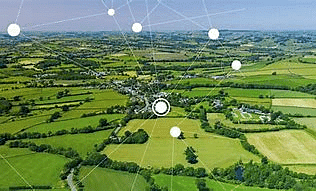
Why in News?
Recently, IEEE sanctioned a wireless network structure to enhance affordable broadband access in rural regions, formulated at IIT Bombay.
Fundamentals of Cellular Network:
- A cellular network, like a 5G network, comprises a collection of network equipment linked by communication connections.
- It functions collectively to transfer data between various devices and to other networks, such as the Internet.
A cellular network can be categorized into two sub-networks:
- Access Network (AN)
- Core Network (CN)
The AN includes base stations that offer wireless connectivity to mobile devices within a defined area, termed the coverage area.
These base stations are commonly visible as towers with antenna boxes atop and are deployed throughout the region by a network operator.
The CN differs from the AN as it houses equipment that links to other networks, like the Internet.
The CN is centrally situated and connected to base stations through optical fiber links known as backhaul.
The CN is vital for sustaining user mobility, a pivotal feature of cellular networks.
Challenges of Mobile Connectivity in Rural India:
- Despite the ubiquity of cellular networks, their availability and utilization significantly vary between urban and rural areas, especially in developing nations like India.
- Urban regions exhibit a tele-density of 127%, indicating each person on average possesses over one mobile connection.
- In contrast, rural areas display a tele-density of 58%, suggesting only about half of the rural populace owns a mobile connection.
This highlights a noticeable urban-rural digital gap, a prevalent concern in numerous developing countries.
Reasons for Inadequate Mobile Connectivity in Rural Areas
- One primary cause for the absence of cellular networks in rural locales is the lower income of rural inhabitants, rendering mobile services too costly for many.
- Furthermore, rural areas exhibit lower population densities, dispersed populations in villages separated by extensive vacant spaces, and remote settings.
About BharatNet Project:
- BharatNet constitutes the world's most extensive optical fiber-based rural broadband connectivity initiative.
- It is executed by Bharat Broadband Network Limited (BBNL), a specialized organization under the Telecom Ministry.
- It is a far-reaching rural internet access program, an endeavor by the Union government under its Digital India campaign.
Features & Advantages of BharatNet:
- By utilizing optical fiber, the program aims to bring broadband internet connectivity to each of the more than 2.5 lakh gram panchayats nationwide.
- The government aims to furnish a minimum of 100 Mbps bandwidth at each Gram Panchayat through BharatNet to ensure universal access to online services, especially for those in rural India.
- As part of the BharatNet project, the Center will also furnish last mile connectivity through Wi-Fi and other means, establishing Wi-Fi hotspots in all gram panchayats.
Progress Thus Far:
- The initial project scope aimed to cover 2.5 lakh gram panchayats in the nation with optical fiber by August 2021.
- However, this deadline was not met.
- Presently, approximately 1.94 lakh villages are connected, with the remainder anticipated to be linked in the next 2.5 years.
- The project's advancement was impeded by lockdowns and travel restrictions due to the COVID pandemic.
- In the Union Budget 2022-23, the government extended the project deadline to 2025.
GS-II/International Relations
World Drug Report 2024
Source: Business Standard
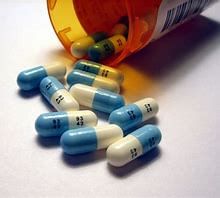
Why in News?
The United Nations (UN) agency tackling crime and drug abuse (UNODC) released its annual World Drug Report recently.
World Drug Report 2024 Highlights
Increase in Drug Use:
- 292 million people used drugs in 2022, a 20% increase over the past decade.
Most Widely Used Drugs:
- Cannabis: 228 million users.
- Opioids: 60 million users.
- Amphetamines: 30 million users.
- Cocaine: 23 million users.
- Ecstasy: 20 million users.
Emerging Drug Threats:
- Nitazenes, highly potent synthetic opioids, have led to increased overdose deaths in several high-income countries.
Drug Use Disorders:
- 64 million people suffer from drug use disorders globally.
- Only one in 11 individuals with drug use disorders receive treatment.
- Women receive less treatment access than men (one in 18 women versus one in seven men).
Drug Offences:
- 7 million people had formal police contact (arrests, cautions, warnings) for drug offences in 2022, with two-thirds related to drug use or possession.
- 7 million people were prosecuted, and over 1.6 million were convicted for drug offences globally in 2022.
Key Facts about UN Office on Drugs and Crime (UNODC)
Leadership Role:
- Global leader in fighting illicit drugs and international crime.
- Implements the UN's lead programme on terrorism.
Establishment:
- Formed in 1997 by merging the United Nations Drug Control Programme and the Centre for International Crime Prevention.
Headquarters:
- Located in Vienna, Austria.
Mission and Activities:
- Educates about drug abuse dangers.
- Strengthens international action against illicit drug production, trafficking, and drug-related crime.
- Enhances crime prevention and supports criminal justice reform.
- Promotes rule of law and combats transnational organized crime and corruption.
- In 2002, expanded its terrorism prevention activities, assisting states in ratifying and implementing 18 universal legal instruments against terrorism.
Funding:
- Relies mainly on voluntary contributions from governments to fund its activities.
GS-I/Geography
Key Facts about Saryu River
Source: Times of India
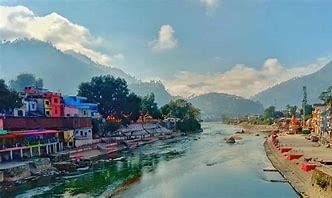
Why in News?
An artificial lake formed in the Saryu River remains a “significant threat” as efforts to drain it have failed for the second consecutive day.
About Saryu River
Location:
- Flows through the Indian states of Uttarakhand and Uttar Pradesh.
- Also known as the Sarayu or Sarju River.
Historical Significance:
- Mentioned in ancient texts like the Vedas and the Ramayana.
- Ayodhya, the birthplace of Lord Rama, is located on its banks.
- The riverbanks in Ayodhya are frequently used for various religious rituals.
Course:
- Originates from the foothills of the Himalayas.
- Acts as an auxiliary river to the Sharada.
- Passes through Kapkot, Bageshwar, and Seraghat towns.
- Joins the Sharada River at Pancheshwar, on the India-Nepal border.
- The Sharada River (also known as Kali River) flows into the Ghaghara River in Sitapur District, Uttar Pradesh.
- The lower Ghaghara is popularly known as Sarayu, particularly as it flows through Ayodhya.
GS-III/Science and Technology
Down Syndrome
Source: Business Daily

Why in News?
A recent research study has documented what is potentially the first-ever case of Down syndrome in Neanderthals.
Down Syndrome
Definition:
- A condition where a person has an extra chromosome or an extra piece of a chromosome.
- Chromosomes are tiny "packages" in cells that contain genes.
- Genes carry DNA, which controls appearance and bodily functions.
Chromosomal Abnormality:
- People with Down syndrome have an extra copy of chromosome 21.
- This is called a trisomy, specifically trisomy 21.
- The extra chromosome affects the development of the body and brain.
Effects:
- Causes mental and physical challenges throughout life.
- People with Down syndrome might look and act similarly but have different abilities.
Causes:
- Usually not inherited.
- Occurs by chance as an error during cell division in early fetal development.
Symptoms:
- Vary from person to person and can change over time.
- Common physical signs include:
- A flat face
- Eyes that slant upward
- A short neck
- Small hands and feet
- Poor muscle tone
- Loose joints
- Intellectual disabilities are typically mild to moderate, and developmental delays are common.
Treatment:
- Down syndrome is a lifelong condition with no cure.
- Early therapy programs can help improve skills.
- Treatments are tailored to each person's specific physical and intellectual needs, strengths, and limitations.
GS-III/Environment
Senna spectabilis
Source: The Hindu

Why in News?
Environmental organisations recently urged the Forest Department to maintain transparency in a project to extract Senna spectabilis from the Wayanad Wildlife Sanctuary.
Senna spectabilis
Classification:
- Species of the legume family.
- Native to South and Central America.
Characteristics:
- Medium to large tree.
- Grown as an ornamental plant for its bright yellow flowers.
- Fast-growing, especially on deep soils.
- Resistant to fire and termites.
- Tolerant of strongly acidic soils.
Uses:
- Planted for fuelwood, ornamental purposes, and as a shade tree in agroforestry.
Environmental Impact:
- Classified as an Invasive Alien Species (IAS) in India.
- Considered an environmental weed by the Global Compendium of Weeds.
- Introduced in India as shade trees for coffee and for firewood, it became a threat to native species due to its dense foliage which prevents the growth of indigenous trees and grasses.
Conservation Status:
- Classified as Least Concern under the IUCN Red List.
Wayanad Wildlife Sanctuary
Location:
- Located in Wayanad, Kerala, in the southern trenches of the Western Ghats.
- Part of the Nilgiri Biosphere Reserve, a UNESCO World Heritage Site.
- Bordered by Nagarhole and Bandipur in Karnataka to the northeast and Mudumalai in Tamil Nadu to the southeast.
Indigenous Tribes:
- Inhabited by scheduled adivasis including Paniyas, Kattunaikkans, Kurumas, Ooralis, Adiyans, and Kurichiyas.
Flora:
- Contains significant Western Ghats vegetation types, from moist deciduous to dry deciduous and semi-evergreen patches.
- One-third of the sanctuary is covered by plantations of teak, rosewood, eucalyptus, and silver oak.
- Includes marshy lands.
Fauna:
- Home to a variety of animals such as elephants, panthers, tigers, jungle cats, civet cats, monkeys, wild dogs, bison, deer, and bears.
- Known for having the largest population of tigers in Kerala.
GS-III/Environment and Ecology
Steel Slag
Source: India Education Diary
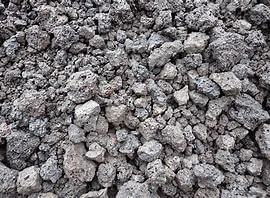
Why in News?
Recently, the member (Science) of Niti Aayog released the Guidelines for the Utilization and Processing of Steel Slag as Processed Steel Slag Aggregates in Road Construction.
Steel Slag
Definition:
- Industrial byproduct from the steel manufacturing industry.
- Produced in large quantities during steel-making operations using electric arc furnaces.
- Also produced by smelting iron ore in a basic oxygen furnace.
Composition:
- Primarily consists of calcium, magnesium, manganese, and aluminum silicates and oxides in various combinations.
Production Process:
- The cooling process of slag generates different types of slag for various end uses.
Applications:
1. Environmental Remediation:
- Used as a barrier material for waste sites to prevent heavy metal leaching.
- Forces heavy metals to precipitate out of solution in water runoff due to its high oxide mineral content.
- Successfully used to treat acidic water discharges from abandoned mines.
2. Construction Material:
- Can replace coarse aggregate in construction.
- Offers higher impact and crushing strength.
- Provides better anti-skid properties.
|
38 videos|5293 docs|1118 tests
|
















